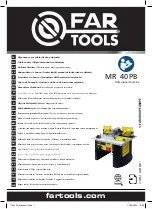
Chapter 8
| General Security Measures
ARP Inspection
– 258 –
ip arp inspection
log-buffer logs
This command sets the maximum number of entries saved in a log message, and
the rate at which these messages are sent. Use the
no
form to restore the default
settings.
Syntax
ip arp inspection log-buffer logs
message-number
interval
seconds
no ip arp inspection log-buffer logs
message-number
- The maximum number of entries saved in a log message.
(Range: 0-256, where 0 means no events are saved and no messages sent)
seconds
- The interval at which log messages are sent. (Range: 0-86400)
Default Setting
Message Number: 5
Interval: 1 second
Command Mode
Global Configuration
Command Usage
◆
ARP Inspection must be enabled with the
ip arp inspection
command before
this command will be accepted by the switch.
◆
By default, logging is active for ARP Inspection, and cannot be disabled.
◆
When the switch drops a packet, it places an entry in the log buffer. Each entry
contains flow information, such as the receiving VLAN, the port number, the
source and destination IP addresses, and the source and destination MAC
addresses.
◆
If multiple, identical invalid ARP packets are received consecutively on the
same VLAN, then the logging facility will only generate one entry in the log
buffer and one corresponding system message.
◆
The maximum number of entries that can be stored in the log buffer is
determined by the
message-number
parameter. If the log buffer fills up before a
message is sent, the oldest entry will be replaced with the newest one.
◆
The switch generates a system message on a rate-controlled basis determined
by the
seconds
values. After the system message is generated, all entries are
cleared from the log buffer.
Example
Console(config)#ip arp inspection log-buffer logs 1 interval 10
Console(config)#
Summary of Contents for EX-3524
Page 2: ......
Page 28: ...Figures 28 ...
Page 34: ...Section I Getting Started 34 ...
Page 58: ...Chapter 1 Initial Switch Configuration Setting the System Clock 58 ...
Page 72: ...Chapter 2 Using the Command Line Interface CLI Command Groups 72 ...
Page 156: ...Chapter 5 SNMP Commands Notification Log Commands 156 ...
Page 164: ...Chapter 6 Remote Monitoring Commands 164 ...
Page 218: ...Chapter 7 Authentication Commands Management IP Filter 218 ...
Page 268: ...Chapter 8 General Security Measures Port based Traffic Segmentation 268 ...
Page 292: ...Chapter 9 Access Control Lists ACL Information 292 ...
Page 312: ...Chapter 10 Interface Commands Power Savings 312 ...
Page 324: ...Chapter 11 Link Aggregation Commands Trunk Status Display Commands 324 ...
Page 366: ...Chapter 15 Address Table Commands 366 ...
Page 428: ...Chapter 17 VLAN Commands Configuring Voice VLANs 428 ...
Page 572: ...Chapter 25 IP Interface Commands IPv6 Interface 572 ...
Page 578: ...Section I Appendices 578 ...
















































